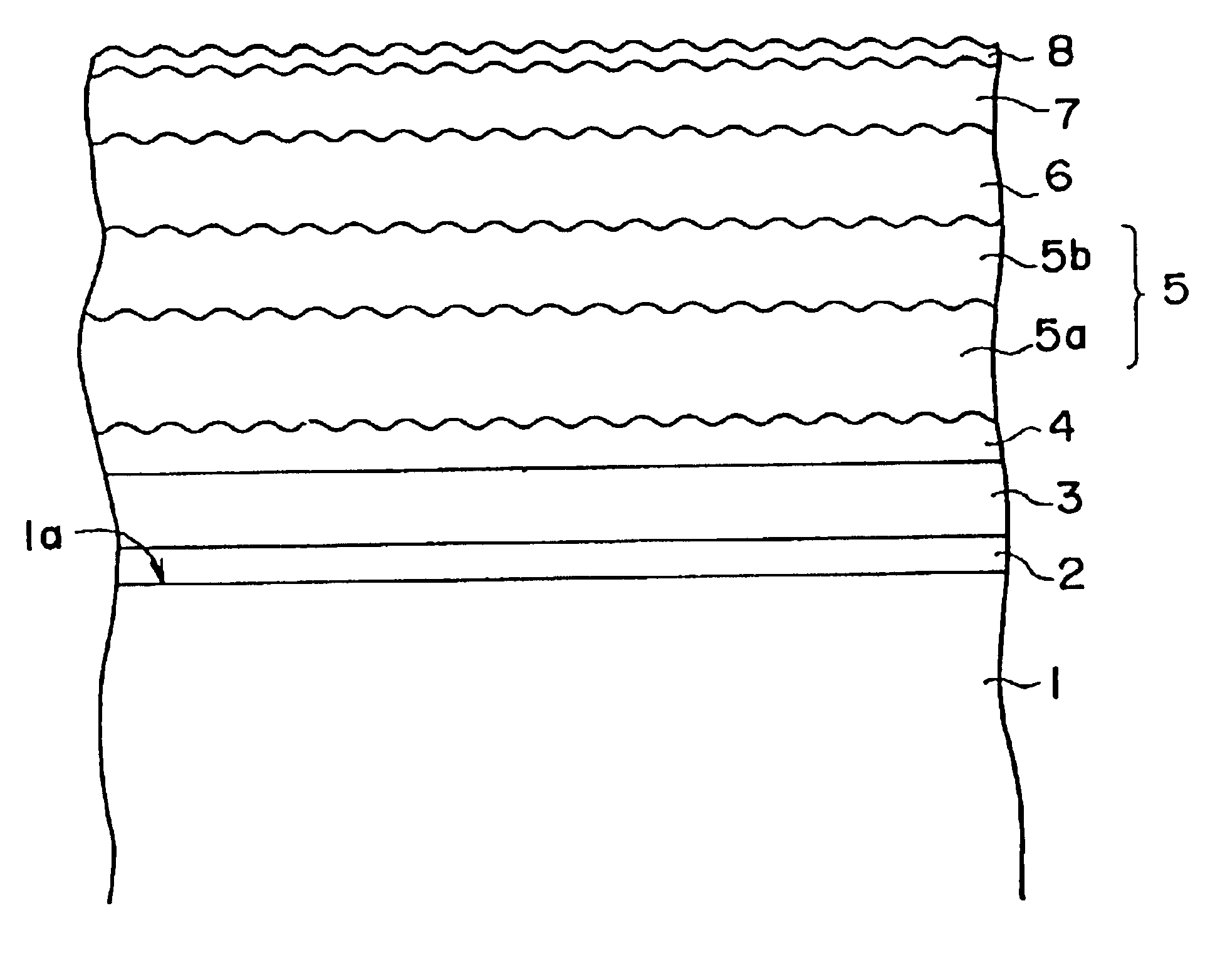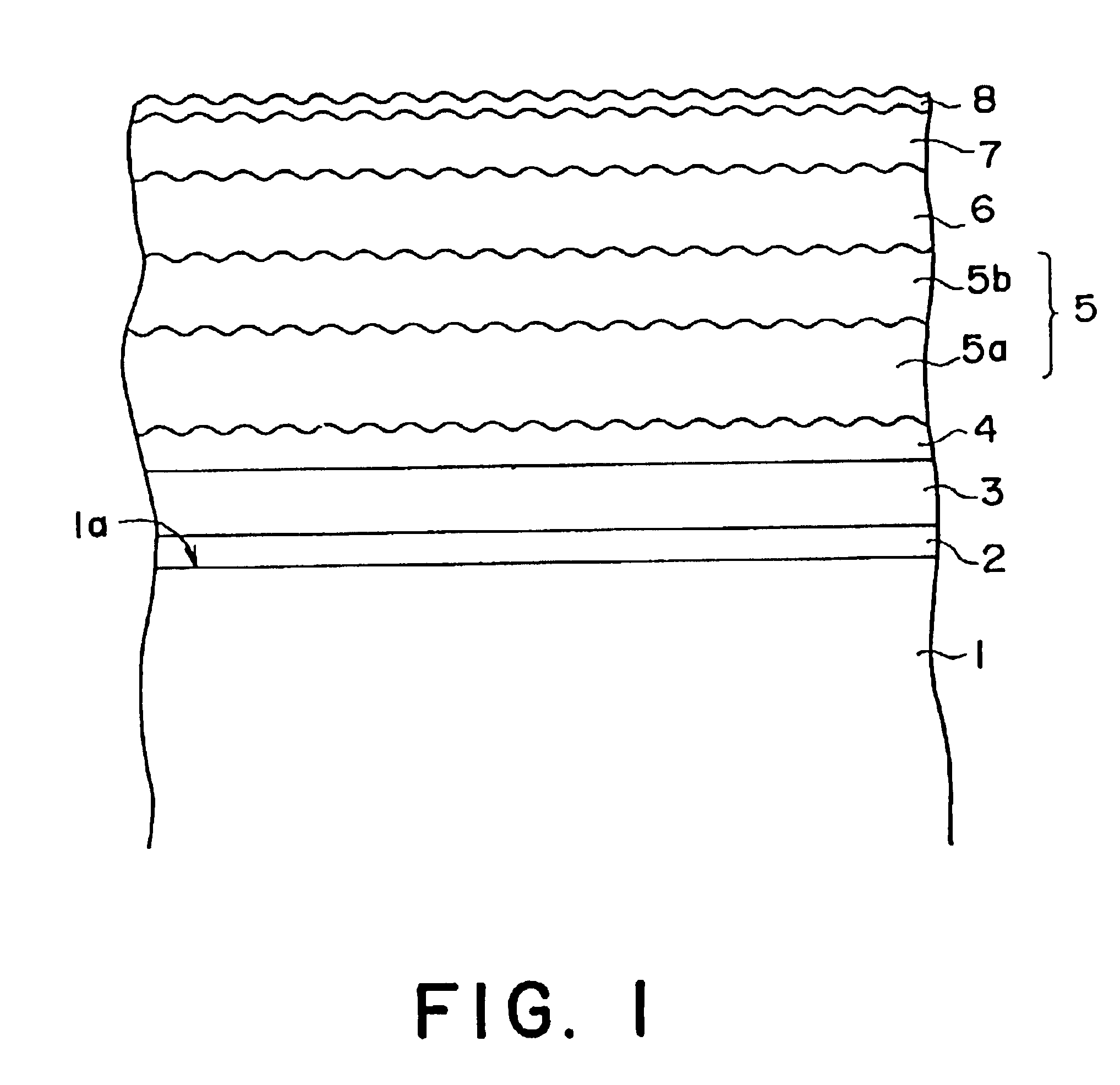Method of manufacturing a glass substrate and a magnetic recording medium
a technology of glass substrate and magnetic recording medium, which is applied in the field of magnetic recording medium manufacturing, can solve the problems of insufficient record/reproduce characteristic, inability to obtain magnetic disks having excellent magnetic characteristics, and inability to meet the recent strict demand for conventional magnetic recording medium, etc., to achieve stable and excellent magnetic characteristics, suppress the variation of surface roughness, and the surface roughness of glass substra
- Summary
- Abstract
- Description
- Claims
- Application Information
AI Technical Summary
Benefits of technology
Problems solved by technology
Method used
Image
Examples
examples 2 to 4
, COMPARATIVE EXAMPLES 1 TO 4
The magnetic recording medium was manufactured in the same manner as the above-mentioned example 1 except that the polishing condition and the surface roughness of the glass substrate were changed. Thus, examples 2 to 4 and comparative examples 1 to 4 were made. The surface roughness Ra (nm), Rmax (nm) of the principal surface of the glass substrate, Rmax / Ra, the coercive force Hc (Oe), the S / N ratio (dB), Cp and the result of the CSS durability test are represented for the examples 2 to 4 and comparative examples 1 to 4 in Table 1.
TABLE 1CpCpCSSRmaxRaRmaxHc(bothS / N(LowerDura-(nm)(nm)Ra(Oe)sides)(dB)limit)bilityExample12.60.2311.31900-20002.424.2-25.85.3◯215.01.311.51850-20501.621.5-24.13.7◯310.00.810.51865-20351.822.2-24.64.5◯45.00.511.01875-20252.222.9-25.15.1◯ComparativeExample118.51.215.41810-20901.220.4-23.63.0◯214.31.410.21830-20701.321.3-23.93.5◯39.01.09.01840-20601.521.9-24.54.0X418.41.710.81800-21001.119.5-23.52.9Δ
From the above-mentioned result...
examples 5 to 11
, COMPARATIVE EXAMPLES 5 TO 9
The magnetic recording medium was manufactured in the same manner as the above-mentioned example 1 except that the polishing condition and the surface roughness of the glass substrate were changed, the average film thickness of the first underlying layer 2 was set to 1 nm and the surface roughness (Rmax) of the irregularity forming layer was set to 24 nm. Thus, examples 5 to 11 and comparative examples 5 to 9 were made. The surface roughness Ra (nm), Rmax (nm), Rq (nm) of the principal surface of the glass substrate, Rmax / Ra, the average crystal grain size (nm) of the magnetic layer, the S / N ratio (dB) and the presence or absence of the head crash are represented for the examples 5 to 11 and comparative examples 5 to 9 in Table 2.
TABLE 2CrystalGrainSurface RoughnessSize ofof SubstrateMagneticRaRmaxRqLayerS / NHead(nm)(nm)(nm)Rmax / Ra(nm)(dB)CrashExample 50.252.550.3110.21124.7◯ 60.337.770.3923.51324.4◯ 70.429.800.5023.31524.0◯ 80.4612.00.5826.11822.8◯ 90.68...
examples 16 to 20
, COMPARATIVE EXAMPLES 14 TO 16
The magnetic recording media were manufactured by adjusting the film thickness of the irregularity forming layer and the sputtering condition in the same manner as the example 5 except that the surface roughness of the irregularity forming layer was changed into 9 nm (comparative example 14), 10 nm (example 16), 20 nm (example 17), 30 nm (example 18), 40 nm (example 19), 50 nm (example 20) and 55 nm (example 15). Further, the magnetic recording medium was manufactured in the same manner as the example 5 except that the irregularity forming layer having the surface roughness (Rmax) of 10 nm was formed on the glass substrate of the above-mentioned comparative example. In this event, the surface roughness of the irregularity forming layer, the CCS durability and the characteristic of the head crash are represented in Table 5.
TABLE 5RmaxCSS DurabilityHead(nm)(100,000 times)CrashComparativeExample149X◯Example1610◯◯1720◯◯1830◯◯1940◯◯2050◯◯ComparativeExample1...
PUM
| Property | Measurement | Unit |
|---|---|---|
| Grain size | aaaaa | aaaaa |
| Grain size | aaaaa | aaaaa |
| Grain size | aaaaa | aaaaa |
Abstract
Description
Claims
Application Information
 Login to View More
Login to View More - R&D
- Intellectual Property
- Life Sciences
- Materials
- Tech Scout
- Unparalleled Data Quality
- Higher Quality Content
- 60% Fewer Hallucinations
Browse by: Latest US Patents, China's latest patents, Technical Efficacy Thesaurus, Application Domain, Technology Topic, Popular Technical Reports.
© 2025 PatSnap. All rights reserved.Legal|Privacy policy|Modern Slavery Act Transparency Statement|Sitemap|About US| Contact US: help@patsnap.com



